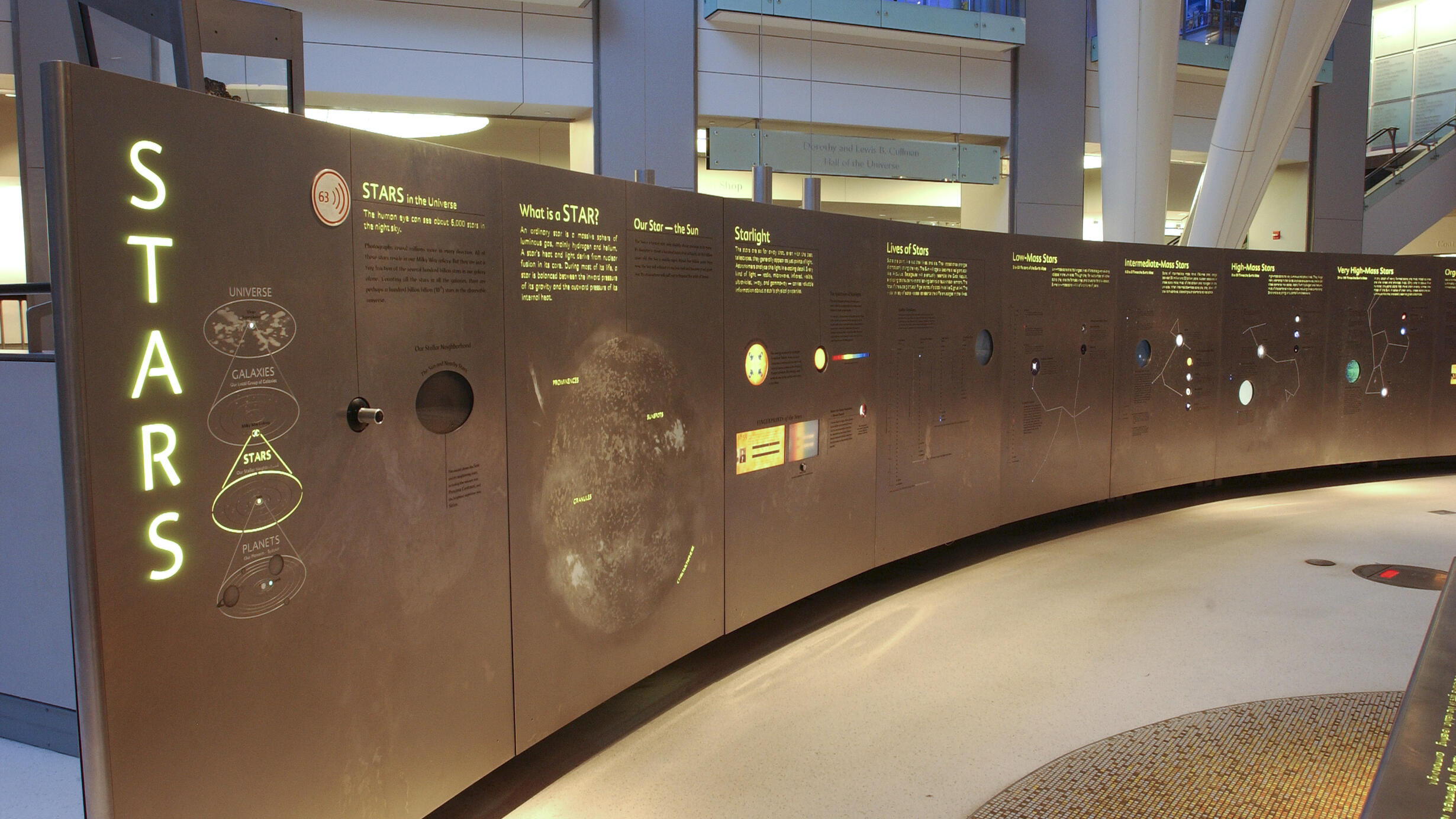Stars
Part of Hall of the Universe.
 AMNH/D. Finnin
AMNH/D. Finnin The human eye can see about 6,000 stars in the night sky. Photographs reveal millions more in every direction. All of these stars reside in our Milky Way galaxy. But they are just a tiny fraction of the several hundred billion stars in our galaxy alone. Counting all the stars in all the galaxies, there are perhaps a hundred billion billion stars in the observable universe.
In This Section
Exhibit
What is a Star?
An ordinary star is a massive sphere of luminous gas, mainly hydrogen and helium.
Exhibit
Starlight
The stars are so far away that, even with the best telescopes, they generally appear as just points of light.
Exhibit
Lives of Stars
Stars are born, live out their lives, and die. Their appearance changes dramatically along the way.
Exhibit
Low-Mass Stars
Low-mass stars are the longest lived of the energy-producing objects in the universe.
Exhibit
Intermediate-Mass Stars
Stars of intermediate mass have lifetimes that range between 50 million and 20 billion years.
Exhibit
High-Mass Stars
High-mass stars are very luminous and short lived.
Exhibit
Very High-Mass Stars
In any batch of newly formed stars, the most massive ones are the rarest and shortest lived.
Exhibit
Organizing the Stars
Astronomers sort stars by placing them on a diagram according to their luminosity and surface temperature.
Exhibit
Recycling the Stars
The material of stars is recycled over billions of years.
Exhibit
Stellar Communities
Telescopes reveal that about half the stars we see are actually double or multiple star systems.
Exhibit
Formation and Evolution of Stars
The stars in the sky seem permanent and unchanging because it takes millions of billions of years for their lives to unfold.
Exhibit
A Spectacular Stellar Finale
A supernova is the explosion of an entire star.
Exhibit
Our Star-The Sun
Our Sun is an ordinary star, just one among hundreds of billions of stars in the Milky Way Galaxy.